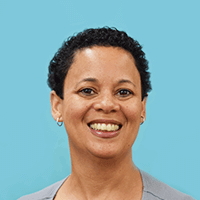The Art of Flipcharts
February 5, 2019 / Comments Off on The Art of Flipcharts
Faith & Finances uses the tangible, customizable flipchart in every lesson. Flipcharts are great because they require no electricity, software updates, or photocopiers. But just because they are intentionally low-tech doesn’t mean that the importance of good flipcharting should be underestimated!
Here are a few pro tips to up your flipchart game:
Planning Ahead
- Prepare your charts in advance whenever possible so that you can take your time with spelling, spacing, and readability.
- Sticky-backed chart paper can be helpful in some ways, but isn’t necessary. It’s more challenging to create charts in advance with the sticky paper.
- For best results, get a sturdy, solid-backed flipchart stand. The wobbly 3-legged easel kind can be difficult to write on.
- If the solid stand is out of the budget, you can tape flipchart paper directly to the wall for writing.
Visual Appeal
- Handwriting not the best? Borrow a friend’s! Know a doodler? Have them embellish!
- Headings, bullet points, numbers, and/or alternating colors can help the writing be easily read and remembered.
- Avoid writing words in light-colored markers like yellow and pink. Use those for highlighting and illustrating.
- The further away your participants are, the larger the letters should be.
- If you have a dedicated space, keep your flipcharts displayed throughout the 12 weeks of the class. Having those visible reminders helps learners make and keep connections between lessons.
Durability
- Whiteboards are okay, but only use them for brainstorming or short-term activities, not for content that would be good to keep for reference later.
- Some facilitators have laminated their primary flipcharts (like the 2 Key Themes) to use in repeat classes.
- When hanging your flipcharts, use masking or painter’s tape to avoid damaging walls.
Search
Posted in U.S. Ministry


